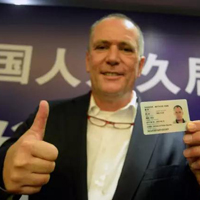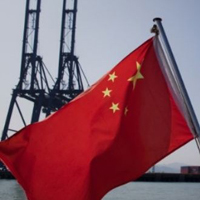- 当前位置:
- 首页>
- 活动>
- ���������������
���������������
CCG持续关注国际关系议题,推动中国与全球化的发展,积极开展国际交流,充分发挥智库“二轨外交”作用,在巴黎和平论坛、达沃斯世界经济论坛、慕尼黑安全会议等重要国际政策与意见交流平台上组织分论坛、边会、圆桌会议、晚宴等活动,促进国际政商学界对话,凝聚共识;CCG积极与各国政界、智库界、工商界开展“二轨外交”活动,每年常态化赴多国调研与交流,促进中外关系攸关方互动,保持与多国政策圈层的沟通渠道。
-
王辉耀:全球化挑战加速复杂化,智库需要凝聚共识、加强合作
在全球经济增长乏力的环境下,旧有经济发展模式难以为继,各国政府都面临艰难的结构性改革,智库对地方政府来说越来越重要。当地经济发展面临产能过剩、资产泡沫、金融风险、企业债务、环境污染及失业率等问题都需要采取政策措施,实现经济转型。智库如何为政府找到治理需求和供给之间的脱节,并提供前瞻性和实效性的分析建议,都是值得深入研讨的课题。王辉耀,全球化智库(CCG)理事长最大的浪费莫过于战略决策失误 智库在经济领域的作用与一国经济的发展尤为相关。前人大委员长吴邦国曾经讲过,中国最大的浪费莫过于战略决策的失误。世界银行也曾在一份早期研究中做出相关估计,认为我国“七五”计划到“九五”计划期间,投资决策失误造成的经济损失在4000亿至5000亿元。可见,不科学的甚至错误的决策带来的后果是相当可怕的,甚至是灾难性的。在这方面,我们要凝聚共识,促进多元化智库参与政策过程。此外,面对复杂的全球化议题和加速的全球化进程,全球的智库还需要思考如何共同行动,协助政策制定者制定问题的解决方案。 在全球经济增长乏力的环境下,旧有经济发展模式难以为继,各国政府都面临艰难的结构性改革,智库对地方政府来说越来越重要。当地经济发展面临产能过剩、资产泡沫、金融风险、企业债务、环境污染及失业率等问题都需要采取政策措施,实现经济转型。智库如何为政府找到治理需求和供给之间的脱节,并提供前瞻性和实效性的分析建议,都是值得深入研讨的课题。智库能够助力构建全球化的共同语言 过去,由于存在语言障碍、交流障碍和思维形式状态障碍,大家所讲的可能不是一回事儿。而现在,随着互联网发展、全球化和英文的普及,大家都在用同样的语言、同样的角度来发言。但即便如此,定义上还是有一些差别,智库作为政策的第一解读者要解决这些差异。从大的角度来说,很多国家支持全球化,都希望能够有同样语言。就具体术语界定而言,智库也应该做出贡献。这也是我们建立这样一个国际智库社区和智库集群的原因。在这样的社区里,大家能够进行辩论,政策制定者在决策时来参考我们充分辩论后的研究结果。 另外在全球化趋势方面,我们有世界贸易组织(WTO),它制定了很多常规的规矩。现在,不同区域的经济合作关系都有自己的安排,比如跨太平洋伙伴关系协议(TPP)。但不管怎么样,应该用统一的术语或语言来进行最基本的归管。 而对于区域性的智库,既需要分析区域性的问题,也需要超越他们的所在区域,并且研究不同的部门和行业问题,这样有助于对未来的发展作出预测。加速的全球化进程,更需拥有全球视野和前瞻性思想的智库 在全球化时代,世界面临的挑战越来越复杂,周遭环境的变化也越来越快。中国推进“一带一路”倡议、积极参与新一轮全球化的过程实际上也是拥有全球视野,共同构建人类命运共同体的过程,具有前瞻性思想的全球智库社区在国家发展、全球化和全球治理中的作用也越来越凸显。 作为智库的实践者,我们需要更多的创新和努力,聚集智库智慧,群策群力,共同为国家应对当前的挑战、实现发展新旧动能转换建言献策。同时,不断加强中国特色新型智库的社会传播力,提升中国智库的国际竞争力和影响力。 中国现在正处于从智库大国走向智库强国的过程中,中联部引领的“一带一路”智库联盟的建设发挥了重要作用。青岛是“一带一路”重要的交汇点,它在智库助力“一带一路”建设过程中还会发挥更加积极的作用。在本届年会前,青岛市市北区政府实际上已出台了建设智库集群的若干意见。这在中国是一个创举,对于建设中国特色新型智库、国际新型智库都起到率先垂范作用。
2017年6月28日 -
郑永年:崛起过程中,中国如何建设“软力量”?
近代以来,一个大国崛起的首要标志是“硬力量”。所有“硬力量”的基础都是经济,没有经济上的崛起,就不会有包括军事、外交在内的各方面的崛起专家简介郑永年,CCG学术委员会主任、新加坡国立大学东亚研究所所长。 近代以来,一个大国崛起的首要标志是“硬力量”。所有“硬力量”的基础都是经济,没有经济上的崛起,就不会有包括军事、外交在内的各方面的崛起。或者说,没有经济的崛起,其他方面的崛起不足以使得一个国家产生国际影响力。 大国首先是经济大国,然后是军事大国和政治大国。这里并不排除一些国家即使没有强大的“硬力量”,但可以发展出很强大的“软力量”,例如文化、艺术等。古代很多建立在文明之上的大国包括传统中国就是这样。 但是,光有“软力量”而没有“硬力量”的国家,其对他国的影响力也会是有限的。例如今天很多小国都有很多“软力量”(文学艺术和宗教等),但他们的国际影响力,也就是它们影响和改变他国行为的能力,并不显见。再者,如果“硬力量”不足,那么国防就成为大问题,“软力量”不能自保,作为“软力量”载体的国家也不能自保。 另一方面,建立在经济基础之上的各种“硬力量”必须软化,否则“硬力量”就很容易会被其他国家视为是威胁。一个国家光有“硬力量”,从“硬力量”所能得到的影响力就会有限,也是不可持续的。 从历史经验看,尽管“硬力量”和“软力量”两者很少有可能同时发展,但在一个国家发展“硬力量”的同时也要开始建设“软力量”。当然,这是一种理想的状态,在现实中,一个国家的“硬力量”和“软力量”的建设都是很不容易的事情。但如果没有“软力量”,维持“硬力量”的成本就会非常高,因而不可持续。前苏联就是一个典型的案例。 中国各方面的“硬力量”正在崛起,继续的崛起也不可避免。因此,如何建设“软力量”便是中国所面临的国际挑战。实际上,自从中国开始崛起以来,各种不同版本的“中国威胁论”从来就没有间断过。正因为这样,中国官方在国家发展的不同时期也提出了相应的政策话语,希望化解国际社会对中国的担忧。 中国硬实力的崛起必然引出其他国家的担忧,这是正常现象。不管中国政府做如何的努力,这种担忧不会消失。问题在于,为什么外界对中国崛起有如此的担忧?这里其中一个要素就是随着中国的崛起和“硬力量”的发展,中国的民族主义也在崛起,并且变得很强大。 而从国际关系历史上看,民族主义经常导致国家间的冲突。或者说,中国官方意在化解外界对中国崛起担忧的政策话语远远抵消不了民族主义的崛起所带来的“负软实力。” 矛盾的是,尽管民族主义在国际社会往往是一种“负软实力”,但对民族国家内部来说,则是一种相当有效的“软实力”。民族主义的崛起是一个国家崛起过程的必然现象,同时民族主义也是有利于国家内部不同要素的整合。不过,民族主义必然对一个国家的外部关系产生很大的影响。 从现象上看,民族主义往往和种族优越、民族优越、文化沙文主义等联系在一起的。因此,民族主义也是任何一个国家现代化过程必须超越的一环。中国也一样。随着国家的崛起,人民对国家的自豪感变得不可避免。但令人担忧的是,直到今天,中国的民族主义往往体现在简单的“义和团主义”,包含了近代以来的受害者情结和崛起之后的复仇情结。 再者,在西方,很多政治人物和学者仍然受欧洲历史的影响,把中国的崛起和欧洲德国的崛起联系起来。在亚洲,人们也把中国民族主义和日本战前的民族主义做比较。言下之意就是,中国的民族主义也有可能重复德国民族主义和日本民族主义往日的道路。 我们对这种关联不可忽视,因为一旦这种关联成为其他国家决策者所考虑对华关系的起点,那么中国和其他国家尤其是大国的冲突有可能变得不可避免。例如,当尼克松政府发动越南战争时,就认为胡志明就是欧洲的希特勒。如果胡志明就是希特勒,那么越南战争就是合符道德的正义战争了。因此,中国必须有意识地避免其他国家把中国民族主义和德国、日本的民族主义相提并论,在实践层面,更需要回避走这条导致自我击败的道路。 中国当然不存在德国、日本那样的战争导向的民族主义,这种概念只是西方的误解。正因为这样,中国政府近年来选择了“文化走出去”。这里的理论前提是:外在世界之所以对中国有这样的误解,主要是因为外在世界不了解中国、中国的和平文化,等等,如果外在世界了解了中国文化的方方面面,那么外在世界的这种担忧就会消失。“文化走出去”政策背后的这种理性并非没有一点道理。但是,“文化走出去”现在面临着很多问题。 一个严酷的事实是,大家都知道了中国文化要走出去,但谁也不知道文化方面什么东西要走出去,什么样的文化才能改变他国对中国的看法,不再感到中国有这样那样的威胁。正如商家做营销,首先自己必须有产品,营销只是包装和策略问题。营销得当就能够改变人们对你所有的产品的认知,甚至确立对你的产品的认同感。但无论如何,首先必须有高质量的产品。如果产品质量低下,营销做得怎么好也会无济于事。 无论从历史还是现实看,一种文化要成为“软力量”,至少需要三个条件: 第一,这个文化,不管是产自本土还是结合了从外面“输入”的因素,必须是能够解释自己。如果一种文化不能解释自己,那么如何能够让“他者”了解自己呢? 第二,这种文化必须能够让“他者”信服,信任。如果“他者”对这种文化不能信服,不能信任,那么便是没有“软力量”。 第三,也是更为重要的,“他者”能够自愿接受这种文化,“自愿性”是“软力量”的本质。具备了这三个条件,文化是不需要被推广的,尤其不需要通过政治力量而得以推广。 在唐朝,没有政府到处去推销文化,但文化到达了东亚社会的各个角落。近代以来西方文化的传播,基本上也不是依靠政府的力量的。如果一种“软力量”需要政府去推广,那么人们一方面就可以怀疑这一文化是否“软文化”,另一方面也会感觉到很硬。例如,西方的民主自由等价值是西方政治“软力量”的核心,但如果西方政府通过各种手段要把这些价值强行推销到其他国家,强迫其他国家接受,那么便不是“软力量”,而是“软力量”的反面。 中国现在还不具备这样一种软文化,因此很容易理解各种“推销”行为为什么显得那么吃力。中国现在所有的是一种“依附性”的知识体系,要不依附于自己的历史传统,要不依附于西方文化。 中国文化里面包含有传统因素,或者外国文化因素,或者是两者的结合,这不仅没有问题,而且也是优势。但这种文化必须能够满足第一个条件,即能否解释自己。传统文化曾经辉煌过,但已经不能解释现实中国了。中国现在缺少的是能够解释自己的文化产品。 今天,我们所有的产品是大多是复制品。政府一直在提倡“文化创新”,但很多人在进行所谓的“文化创新”过程中,要不简单照抄照搬,要不就是应用性,也就是西方技术,中国材料。 在很多方面,中国往往是用人家的话语来说明自己,结果是很显然的,就是,越说越不清楚。中国那么大的一个国家,而且是基于文明之上的国家,很难像一些非西方的小国那样,用西方的话语来打扮自己。再者,因为中国努力抵制西方式政治制度,而不能像日本那样把自己打扮成为西方国家。中国强烈反对西方把自己的逻辑强加给自己,这没有错,问题在于,什么是中国自己的文化逻辑呢?没有人能够说清楚,因为我们没有自己的知识体系。 因此,也不难理解,中国目前和今后相当长的一段历史时期里,最重要的议程就是要文化创造,一种既能够解释自己、又能让他人了解自己、并且自愿接受的文化。这样一种文化才具备“软力量”。 自近代以来,从经验上看,一个国家在创造这样一种具有“软力量”的文化面临两大挑战,一是如何克服内部的民族主义,二是如何建设其他国家所能接受的文化和价值体系(或者普世价值)。 中国也不例外,而且这两个任务都很艰巨。 第一个任务是如何软化民族主义。如前面所述,民族主义有其正面的地方,那就是强化人民的民族和国家认同感。但民族主义必须超越“义和团主义”的两个主要特征,一是排外,二是非理性。也就是说,中国需要实行民族主义的转型,使得其拥有包容和理性的特征。这并非不可能。 西方一些国家也具有强烈的民族主义,但也具有包容和理性的特征。英、美、法、德等国家的民族主义并不是本来就具有开放性的,而是经过了很长时间的转型过程。美国早期很排外,但现在很包容。德国的民族主义更是基于种族之上,为其他民族(尤其是犹太民族)带来灾难,但现在也很开放。民族主义的开放、包容和理性是转型的结果。 如何改造民族主义?这就和第二方面紧密相关,那就是要增加现有文化中具有普世价值的成分,或者说要创新文化使得其具有普世性。 中国现在还没有发展出能够让其他国家欣赏和接受的文化价值。要发展具有“软力量”的文化,中国迫切需要建设中国本身的知识体系,任何一种文化的内核就是知识体系。在国际关系层面,这个知识体系必须是理性民族主义和普世文化价值的结合。 民族主义所要表达的就是一个民族和国家的特殊性,而普世文化所要表达的则是一个民族和国家的普世性,也就是说和其他民族和国家的共同性。任何一种文化都是特殊性和普适性的结合。换句话说,每一个民族和国家都有其自身的核心价值,但同时也具有和其他民族和国家共同享有的共享价值。 简单地说,中国的“软力量”文化的建设就是要把自己的核心价值和作为人类共同体一员的共享价值有机的结合起来。体现自己核心价值的文化或者知识体系就能够解释自己,而包容普世价值的文化和知识体系就能够为他人所理解和接受。文章选自正角评论,2017年6月23日
2017年6月27日 -

【南方周末】“外国人第一次有身份证了”
▲2017年6月16日,浙江杭州一名外籍人士展示刚领取的《中华人民共和国外国人永久居留身份证》。(视觉中国/图)全文共3648字,阅读大约需要5分钟。美籍教授柯道友2010年办成“中国绿卡”,“花了3年时间,提供了一百多页资料,有我在美国的博士学位认证、清华教授证明函、中国驻美大使馆的确认信等材料,上自民政局、大使馆、公安部,下到街道办派出所、居委会,往返美国多次,盖了近百个章,才办下来。”“中国并不是一个移民国家,中国幅员辽阔、人口众多,是否允许更多的外国人到中国来,要考虑因素比纯粹的资本和货物更加复杂和敏感得多,尤其是跨境人员流动中会涉及国家安全,需要持更加谨慎的态度。”“外国人获得永久居留权,不仅是在中国获得身份的问题,还涉及中国管理体制,对人口的管理,社会保障的配套,公众对外国人的接纳,文化上的适应等诸多问题。” 本文首发于南方周末微信号:nanfangzhoumo从2017年6月16日起,公安部签发新版“中国绿卡”,将原有的“外国人永久居留证”更名为“外国人永久居留身份证”。新版“中国绿卡”的最大变化是,它同中国公民的身份证一样,可以单独出示和使用。“外国人第一次有身份证了。”听说这个消息,1991年就来到中国,现任职于清华大学热能工程系的美籍教授柯道友告诉南方周末:“新的外国人身份证,让我觉得和中国人一样生活在这里。”毫无疑问,对于在华生活了很长时间的外国人来说,新版“中国绿卡”不仅让他们拥有了一种归属感和安全感,更为他们在中国的生活提供了很多实际的便利。1“中国绿卡”何时出现?“绿卡”(Green Card)一词起源于美国,因美国颁发给外国人的永久居留许可证是一张绿色的卡片而得名。“绿卡”是第二次世界大战的产物,当时美国移民归化局(INS)为了区分二战后大批涌入美国移民的不同身份状态,开始颁发不同类型的身份证明文件。最早的“绿卡”是一张名为“I-151”的表格,只有持有该表的外国人才可以不受限制地在美国工作、生活,不必面临随时被驱逐出境的危险。这之后,美国的“绿卡”制度逐渐从用作内务管理之便,转为吸引各国优秀人才的国家战略手段。各国也随之纷纷效仿,并将本国的永久居留许可证俗称为“绿卡”。“中国绿卡”的雏形最早可追溯至1964年4月,国务院发布《外国人入境出境过境居留旅行管理条例》,解决了外国人在中国定居的身份问题。1985年,全国人大常委会通过《中华人民共和国外国人入境出境管理法》。1986年,中国第一个外籍厂长、原湖北武汉柴油机厂厂长、德国专家格里西成为首位被授予永久居留资格的外国人。2004年《外国人在中国永久居留审批管理办法》出台,首次采用国际通行做法,“中国绿卡”在制度层面终于有了实施细则。曾经在延安与中国人民共同迎来抗战胜利的美国农业专家寒春,是获得“中国绿卡”的第一人。但是,“中国绿卡”一直以来申请门槛高,发放数额少。2004年的管理办法实施一年后,只有约100人获批。由于绿卡申请条件过于苛刻,在华生活的外国人,提到绿卡他们的第一反应是:太难申请。一些外国人称:可能在中国生活一辈子都拿不到绿卡。比如,投资人员“绿卡”:至少要在中国直接、连续3年投资稳定,实际缴费注册资本不少于50万美元;技术人员“绿卡”则需要副总经理、副厂长等职务以上,已连续任职满4年且居留累计不少于3年;亲属团聚“绿卡”需要移民的配偶婚姻关系满5年、连续居留满5年每年不少于9个月,且有稳定生活保障和住所。“中国绿卡”申请的规定当中,还有许多附加条件非常模糊,比如“特殊贡献”。曾想要申请特殊贡献签证的韩国人郑成宇称:“没有人告诉我如何界定(什么是特殊贡献),我只能请所有合作过的中国机构、公司出具书面材料,证明我在这个国家的贡献。”从实际情况看,本世纪初大多数“中国绿卡”获得者均为大企业外国投资者或是名人,那时的“中国绿卡”更像荣誉证书。换而言之,普通的在华工作的外国人较难申请到“绿卡”。美籍教授柯道友回想起自己在2010年办成“中国绿卡”的经历时十分感慨:“花了3年时间,提供了一百多页资料,有我在美国的博士学位认证、清华教授证明函、中国驻美大使馆的确认信等材料,上自民政局、大使馆、公安部,下到街道办派出所、居委会,往返美国多次,盖了近百个章,才办下来。”其实,申请美国绿卡也并非易事,大多数人必须聘请专业律师来办理。2015年,中国与全球化智库发布了《中国国际移民报告(2015)》蓝皮书,蓝皮书援引汇丰集团《外派人员调查报告2014》认为,中国仅次于瑞士、新加坡,是世界第三具有吸引力的移民目的国。但目前,在中国居住的外籍人士比例仍然很低。自中国2004年实行绿卡制度以来,到2013年9年中,获得中国绿卡的外国人总人数仅为7356人。2松绑之路由于获得绿卡人数太少,2013年中国开始放宽外籍人员来华政策,出台了《外籍高层次人才来华提供签证及居留便利有关问题的通知》。这一通知是对2004年最早出台的政策的修订,可以让无法在中国申请永久居留的人员,办理2至5年有效的外国人居留证件。到了2015年,上海、北京、广州、福建开始了新一轮“绿卡制度”改革,推行了一系列便利化政策,其中一项主要内容是——放开永久居留证的申请条件。其中一项内容是,扩大在华永久居留的外国人的工作单位范围:在国家实验室、国家工程实验室、国家认定企业技术中心等7类企业工作的外国人,都可申请在中国永久居留。此后一年,中国绿卡获得人数大幅提高。2016年4月18日,北京首钢队当家球星马布里在个人微博上公布,自己已获得中华人民共和国外国人永久居留证。“老马”是首位获得中国“绿卡”的CBA外援。他在微博中表示:“能成为中国首都的一部分是一份真正的荣耀。”根据数据统计,2016年公安部批准1576人获得中国绿卡,和2015年相比增加了163%。截至2016年,中国绿卡获得者人数破万,达到11000多人。“当初制定绿卡政策的目的是吸引更多的外国高级人才,特别是对国家发展有特别意义的人才。”北京理工大学教授刘国福告诉南方周末,近些年绿卡政策放宽的主要原因是,由于“绿卡”起步门槛高,来华外籍人员没有形成一定规模,“当初的目的没有得到实现”。另外,刘国福补充说,“随着中国近些年‘走出去’和‘一带一路’倡议的实施,需要大量人员的国际流动,人员流动的较高层次就是获得永久居留权。在中国国家发展和相关的政策背景下,绿卡政策为与之相配合,自然也就进一步被放宽了。”2015年开始的那轮“绿卡”改革主要在北京、上海、广州、福建的自贸区试行,北京是在中关村国家科技园,上海是在自贸区,广州也在自贸区。“事实上中国的绿卡政策一直在逐步放宽,但是由于有适用的人群范围,一般人不是在特定区域就比较难感受到政策放宽。”刘国福说。2017年,“中国绿卡”的改革力度进一步加大。今年2月6日,中央全面深化改革领导小组第三十二次会议审议通过了《外国人永久居留证件便利化改革方案》,指出实施外国人永久居留证件便利化改革,要围绕服务国家人才发展战略,回应社会关切,在优化证件设计、改造信息系统等方面推进改革,着力解决外国人永久居留证可识验和便利化问题,推动永久居留外国人在华资格待遇落实。3“融合是未来要关注的问题”2017年起使用的新版“中国绿卡”,凸显出新版证件的身份证明功能,与中国居民二代身份证相同,在卡内嵌入芯片。同时,它也被录入铁路、民航、银行、宾馆等信息系统,可以在购房、去银行办理金融业务、申领驾照、住宿登记等依法享受中国公民同等待遇,在中国境内工作的也可依法享有社保和公积金等。提到“中国绿卡”,很多人会喜欢和美国绿卡作比较。美国每年向约110万外国人颁发永久居留签证、向80万外国人颁发工作签证,外国人入境人次占美国人口的130%。中国每年只分别向约500人颁发永久居留证、向4万人颁发工作类居留证,外国人入境人次只占中国人口的3.8%,和美国绿卡相比,“中国绿卡”对于外国人的要求似乎是“万里挑一”。“中国‘绿卡’为何难拿?实际上,除了审批程序复杂、进入门槛高以外,也存在一些历史因素。”中国社会法学研究会副会长姜俊禄告诉南方周末,中美绿卡产生的大背景不同,形式上具有可比性,实质上可比性比较少。从中国绿卡产生的背景来看,1960年代到1990年代,在中国长期居住的外国人少之又少。1964年,外国人居留证制度解决了外国人在中国定居的身份问题。直到1995年,北京远郊一百多块标志牌拆除,这座古都才真正向外国人开放。2003年前,来北京的外国人,都必须住在专家楼、使馆区和涉外宾馆。2003年之后,北京才取消了宾馆“涉外”和“涉内”的区别,外国人可以在北京自由租房,甚至购置房产。“中国并不是一个移民国家,加上幅员辽阔、人口众多,是否允许更多的外国人到中国来,考虑因素比纯粹的资本和货物更加复杂和敏感得多,尤其是跨境人员流动中会涉及国家安全,需要持更加谨慎的态度。”姜俊禄告诉南方周末。北京理工大学教授刘国福也认为,“外国人获得永久居留权,不仅是在中国获得身份的问题,还涉及中国管理体制,对人口的管理,社会保障的配套,公众对外国人的接纳,文化上的适应等诸多问题。”在世界范围内,“绿卡”制度成为主要发达国家开展人才竞争,吸引和留住高层次人才的重要制度。随着中国经济和创新的发展,国际影响力不断提升,未来将吸引越来越多的外籍人士来华投资、工作和生活,在新版“中国绿卡”出台之后,外国人在中国的永久居留也将愈发便利。另外,中国移民管理的职能仍较为分散。中国与全球化智库创始人兼主任王辉耀曾经对媒体表示,中国对移民管理的职能分散在很多部委和机构,实际上应该统一起来。“融合是未来要关注的问题。”在刘国福看来,获得“绿卡”的外籍人士同中国公民享有同等权利,这样必然会涉及文化的相互适应问题,还有中国人对异国的文化宗教接纳问题,能否融合是判定这一政策是否成功的标志。“从中国的发展来看,上一步我们实行了对外资的开放,下一步就是对外才和外脑的开放和欢迎。”刘国福告诉南方周末,“中国需要外来人才。目前申请‘中国绿卡’还是相对严格,未来一定会继续放宽。关键是要最大程度地将外国人才吸引到中国,仅提供绿卡远远不够,如何能做大筑巢引凤才是我们要关注的。”文章选自南方周末,2017年6月22日
2017年6月26日 -

【University World News】Number of mobile students out of, and into, China soars
Of the five million international students studying higher education courses outside their own countries, one in four are from just one country: China. But now most Chinese studying abroad are returning home – the outbound-to-return ratio has risen to 82% over the past four years, compared to one in three returnees a decade earlier – and China is attracting hundreds of thousands of foreign students to its shores.In all Western nations with large numbers of foreign students, Chinese are by far the most numerous. China is the largest source of international students in English-speaking countries such as the United Kingdom, United States, Australia and Canada.However, growth in the number of Chinese studying abroad has slowed since 2015, with a year-to-year growth rate of 14% compared with the startling annual average rate of 19% between 2000 and 2015.The case of AmericaAmerican universities are still the main attraction for Chinese students and US institutions enrolled 330,000 Chinese last year or nearly one in three of the total. That compares with 166,000 students from India, the second largest supplier of foreign students. According to the US Institute of International Education’s Open Doors report for 2015-16, the number of international students enrolled in US higher education increased by 7% from the previous year to more than one million for the first time.China remains the top sending country, with almost twice the number of students as India, although India’s rate of growth and absolute increases are outpacing that of China’s.Students from the top three countries of origin – China, India and Saudi Arabia – now represent 53% of the total enrolment of international students in US universities.As the report notes, this was the 10th consecutive year of increasing numbers of foreign students in higher education: “There are now 85% more international students studying at US colleges and universities than were reported a decade ago.”As other countries with large numbers of foreign students are aware, their value to the national economy is often enormous. In the US, the Department of Commerce reports that international students contributed more than US$35 billion to the economy in 2015 – up from US$31 billion the year before. In its 2016 Bluebook Report on Chinese Studying Abroad, China’s Center for China and Globalization(CCG) says the number of Chinese undergraduates in the US now exceeds that of Chinese graduate enrolments. The report says this aligns with the overall trend that more and more young Chinese students “have been sent to study abroad”.“In terms of their choices of schools, Chinese students are paying more attention to the schools’ reputation and career development services, instead of tuition fee and other spending issues,” the report states.The case of BritainBritish universities have also increasingly benefited from a Chinese student influx dating from the early 2000s.In the five years to 2012, for example, the number of students from China and the other Chinese-speaking nations jumped from 81,000 to nearly 200,000 while the totals from the other top 10 sending countries remained virtually flat.The UK Higher Education Statistics Agency reports that for 2015-16, the number of students from China far exceeded any other nationality, at 91,215. The agency also notes that China is the only sending country showing a significant increase in its student numbers whereas enrolments of Indian students coming to Britain continues to fall, with a startling overall 44% decrease in the last five years.A 2015 study, carried out by economists at the UK consultancy PwC and the business lobby London First, found that international students made a net contribution of £2.3 billion (US$3 billion) a year to the UK economy in London alone and supported 70,000 jobs in the capital. The economic contribution of students from China comprised a significant proportion of that sum.Brain drain easingWhile China is the world’s largest source of foreign students, the number of Chinese studying abroad who opt to return home has also been steadily increasing in recent years. Statistics compiled by China’s Ministry of Human Resources and Social Security indicate that a record high of 432,500 ‘returnees’ arrived back in China last year, drawn by the booming Chinese economy. The ministry says the outbound-to-return ratio increased by about 10% in the past four years to 82% in 2016 – yet a decade earlier, only one in three of all Chinese students returned home after finishing their education abroad.Among Chinese students who obtained masters degrees abroad, more than 60% had returned home and nearly half of them were in the major municipalities such as Beijing, Shanghai and Guangzhou. And as reported by University World News, China’s drive to attract more international students to its universities is paying off, with nearly 400,000 students from overseas studying in China in 2015, according to official figures.The number surpassed the government’s 2015 target of achieving an overall international student population of 350,000 by 2015.This year China stepped up its drive to attract overseas talent, announcing among other initiatives new measures to allow foreign students to stay in China to work after study and reducing red tape around residence permits.One Belt, One RoadReferring to China’s massive ‘One Belt, One Road’ project, theBluebook Report says this could contribute more growth in the number of international students in China: “But more efforts are needed to provide sufficient scholarship and entrepreneurship opportunities, among other incentives, to attract more to study in China.”Launched by President Xi Jinping in 2013 as a foreign policy and economic strategy, the project will economically link Europe to China through countries across Eurasia and the Indian Ocean, with other links to Africa and Oceania. The initiative envisages the building of six major economic cooperation corridors and several key maritime pivot points across Eurasia.As the Asia Times reported on 13 May: “As much as [the project] will act as a boost to economies from Bangladesh to Egypt and Myanmar to Tajikistan, it is also a far-reaching economic-free trade-investment plan that will open up markets for Chinese technology and merchandise. And with this comes priceless geopolitical reach for China.“In parallel to this connectivity extravaganza, arguably spanning 65 nations, 60% of the world’s population and a third of global economic output, China will accumulate extra capital from Central Asia to the Middle East. It will also polish its status as leader of the developing world, allowing it to once again try and reignite the 120-nation Non-Aligned Movement.”And almost certainly spread more Chinese students along the world’s new ‘Silk Road’ while also attracting increasing numbers of foreigners to its own universities.From University World News,2017-5-30
2017年6月26日 -

【Bloomberg News】China Says Trump Open to Cooperating on Silk Road Projects
President Donald Trump told China’s State Councilor Yang Jiechi in a meeting that the U.S. is willing to cooperate with Beijing on projects related to its Belt and Road infrastructure initiative, according to a statement from China’s foreign ministry.Since his April meeting with Xi in Florida, Trump has toned down the anti-China rhetoric he campaigned on, and sent Matt Pottinger, National Security Council senior director for East Asia, as the U.S. representative at China’s first Belt and Road Forum in May. Engagement with President Xi Jinping’s signature project to build new trade and investment links between Asia, Europe and Africa would mark a contrast to the Obama administration, which turned down the opportunity to be a founding member of the related Asian Infrastructure Investment Bank.Yang told Trump in a White House meeting Thursday that China highly appreciated the U.S. attendance at the gathering and would be willing to work with the U.S. on the initiative, the ministry said in the statement. The president responded that he would also be open to working together on related projects, according to the statement.The White House didn’t respond to a request for comment.Trump told Yang that he’s happy with the positive progress made in relations since meeting Xi and is looking forward to meeting him again in the Group of 20 nations summit next month in Hamburg, Germany, and visiting China within the year, according to the statement. China VisitAs signs that a visit by the U.S. President were not on the cards multiplied, China had invited Trump’s daughter Ivanka and son-in-law Jared Kushner, both of whom have official jobs in the White House, to visit later this year, Bloomberg reported this week, citing people familiar with the matter.Support from the White House for Belt and Road would be "a boon for China-U.S. relations," said He Weiwen, deputy director of the Beijing-based Center for China and Globalization(CCG), and a former business attache in the Chinese consulates of New York and San Francisco. "The Belt and Road projects are so big that Chinese companies can’t do them alone. They need to find partners elsewhere, including the U.S."U.S. companies have already been deeply involved in the projects along the path, and business leaders in both sides have been calling for cooperation in third countries, he said.Full CooperationThe U.S. Chamber of Commerce and the China Center for International Economic Exchanges, a Beijing-based think tank staffed by a number of retired senior government officials, said in a joint statement Wednesday that the two nations can engage in full cooperation under the Belt and Road initiative and through a number of other means including the AIIB, World Bank, and other multilateral investment and financing institutions.Trump isn’t the only U.S. leader who’s expressed openness to Belt and Road. California Governor Jerry Brown told Xi in a meeting in Beijing this month the most populous state is willing to join the initiative and expand cooperation on green technology, innovation and trade, according to a statement from the governor’s office and a report from the official Xinhua News Agency.Yang and Trump also discussed North Korea, with the president saying the U.S. looks forward to better cooperation with China on addressing nuclear issues and working toward the de-nuclearization of the Korean Peninsula, the ministry said. Yang reiterated that China is willing to keep working with parties including the U.S. to ease tensions in the region.Yang and other top officials were in Washington this week to take part in the new U.S.-China Diplomatic and Security Dialogue, a forum aimed at addressing key disputes between the world’s two largest economies, as well as security issues where they can work together.From Bloomberg News ,2017-6-23
2017年6月26日 -

Skilled Immigrants Are Starting to Choose China Over U.S.
In March, the Chinese search engine company Baidu set out on its first overseas college recruitment tour, which included visits to some of California’s top-tier tech schools like UC Berkeley, Stanford, and USC.But the tech giant wasn’t looking for students to join its research facility in Silicon Valley.Baidu sought to find tech-savvy students willing to decamp to Beijing to work at its headquarters, for both full-time roles and internships, according to a press release announcing the recruitment effort.While American students can intern in China, Baidu’s permanent salaried positions in Beijing were mostly aimed at Chinese citizens in the United States. Much like the rest of the world, it’s easier for Chinese companies to hire Chinese citizens rather than trying to sponsor a foreigner’s employment.It’s not just Baidu trying to repatriate Chinese talent working or studying abroad. Fewer highly skilled immigrants are choosing to work or study in the United States. And China, sensing the opening, is increasingly turning to economic incentives to lure back home their expats pursuing educations elsewhere.Chinese-born students account for 31 percent of international students enrolled at American universities, making China the top supplier of foreigners in the American educational system.But changes are afoot. There’s been a steep decline in the percentage of Chinese-born students applying to American universities, according to an American Association of Collegiate Registrars and Admissions Officers survey of 250 higher learning institutions in the United States.In the last year alone, Chinese applications to undergraduate programs dropped by 25 percent. It was an even bigger drop of 32 percent to graduate programs.Dr. Wang Huiyao, the president of the Center for China and Globalization(CCG), suggested that recent shifts in immigration rhetoric in the United States may be one of the reasons why fewer Chinese students are staying in the United States for professional opportunities after they complete their studies:"I think what Donald Trump does has a big psychological impact. A lot of students plan to go and then not go. A lot of students planning to stay will not stay to find a job. So that, I think, is damaging the core competence of the United States.The United States for the last hundred years has really, that difference, is that they’ve gathered the talents of the world. ... That’s what makes America, really, number one. China’s really lacking the national talent."And so it is that China is taking advantage of the shift by trying to sweeten the deal for Chinese citizens abroad to join its workforce.For example, in Shanghai, the municipal government offers Chinese students abroad a fast track for highly sought-after “hukou,” essentially a household residential registration for social, medical, and educational services, in exchange for working in the city, according to Jie Zong, a policy analyst at the Migration Policy Institute.“Until recently, there hasn’t been a very deliberate strategy for immigration," Zong told IJR. "Quite recently, [the government has] loosened certain requirements in terms of immigration in China.”Part of what seems to be triggering anxiety over immigrating to the United States is that since Donald Trump was elected, the ability to obtain work visas has been uncertain.April’s “Buy American, Hire American” executive order specified that agencies will evaluate the current disbursement of H1-B visas, which are intended for highly skilled workers and academics trying to enter the United States. Before Trump signed the order, the number of H1-B applications dropped in contrast to the previous year, a decreasesome attributed to Trump’s campaign trail rhetoric to reform the program. Soon after the order, immigration services also suspended premium processing for H1-B visa applicants, meaning companies could no longer shell out extra bucks to put their applicants at the head of the line.Last year, Trump called the H1-B visa “very, very bad” for American workers.But with the president this week, during a listening session with technology CEOs, White House Press Secretary Sean Spicer signaled Trump could change his mind:“I think the president is going into this meeting to listen [...] But I think there’s also a worker component to this. We’ve talked a lot about visa reform in the past, and I think the president wants to make sure that he listens to the various people who have interest in this subject.”It’s not just China that’s reacting and adapting to recent immigration uncertainties.About 70 percent of H1-B visas issued each year go to Indian immigrants working in the tech sector, and following the executive order, Indian tech shares “took a steep fall.”(BY MAEGAN VAZQUEZ)From Independent Journal Review ,2017-6-21
2017年6月26日 -
梁建章:中国不需要更多多元化公司
梁建章,全球化智库(CCG)副主席、携程联合创始人、执行董事局主席,兼任北京大学光华管理学院经济学研究教授。 最近随着美团公司CEO王兴的采访,又掀起了公司多元化和专业化的话题的讨论。多元化和专业化当然没有绝对的对和错,历史上肯定有很成功的多元化和专业化公司。但我们还要看一下大的趋势,未来中国会有很多成功的多元化公司吗?什么样的市场环境和技术条件会培育更多多元化的公司或者专业化的公司呢? 首先,从大的历史趋势来看,企业的专业化程度越来越高。这是因为随着经济发展,市场规模会变大,社会分工越来越细,每个公司的产品和服务也会更加专业化。同样的逻辑,越是市场大,人口多的国家,产业的分工就会更细。 一个小国(如日本)最大的电商公司,可能又做旅游,还做金融。但像美国这样的大市场,分工很细。电商只做电商,旅游只做旅游,外卖只做外卖。中国未来的市场规模超过美国,分工可能比美国更细。 其次,专业化有利于创新。创新需要专注和企业家精神。所以,大部分创新都来自于某一个行业的某个初创公司。多元化公司从决策和激励机制不利于创新,但是多元化公司往往有更多的财务资源可以通过模仿和投资来扩张业务板块。 举例来说,美团的点评业务是收购点评后获得的,美团的外卖业务就是模仿了“饿了么”公司。从社会效应来讲,多元化公司因为不是引领创新,所以对社会的贡献要比专业公司要小。同样也因为不是自主创新,多元化公司的资本回报比较低。 多元化公司虽然规模大,但是需要和其他资本竞价投资好的企业,或者需要靠烧钱追赶创新者,所以一般来说资金回报就会较低。在风险资本不发达的年代,多元化公司具备一定的金融资源的优势,所以还能取得不错的回报,例如日本,韩国过去的风险资本不发达,就出现了不少多元化的企业财团。 对比的,在美国,风险资本发达,多元化公司就很难获得很好的回报,美国的GE公司是美国最好的多元化公司,但是就连GE,近几年的业绩也不如人意。最近几十年,相对于日本,美国的专业化公司要比多元化公司发展要好的多,整体美国的创新力也更旺盛。 再次,还有一个因素是全球化。如果一个产业的全球化程度高,那么其潜在市场就是更大的全球市场,这样这个产业的分工更细,公司的专业化程度就更高,整体产业的效率也会更高。这是全球化给更具创造力的专业公司带来的机会。 很多美国公司当取得了本土市场的成功后,往往首先想到的是全球化,把自己的创新扩展到全球市场,而很多中国公司却首先考虑多元化,去投资或者进入新的业务。这可能和中国公司的全球化能力不强,或者公司本身的优势就不是来自于创新有关。 但是这个现象正在发生变化,华为已经有一半的业务来自于海外,一些互联网公司也在积极地推进全球化。例如,携程就有很好的全球化前景,携程的国际业务已经占了整体业务的20%,而且正在迅速成长。 所以,以上的分析,我认为总体来说,中国的企业更应考虑专业化而不是多元化发展,因为中国的市场比美国还大,产业细分程度会超过美国。另外,中国经济还是处于快速发展期,很多行业还处于创新期,这有利于专业公司。中国的专业公司也不缺少资本支持,多元化公司的资金优势并不明显。最后,随着中国企业创新力的提升,全球化的成功率会提高,回报也会比多元化好的多。文章选自中国新闻网,2017年6月23日
2017年6月26日